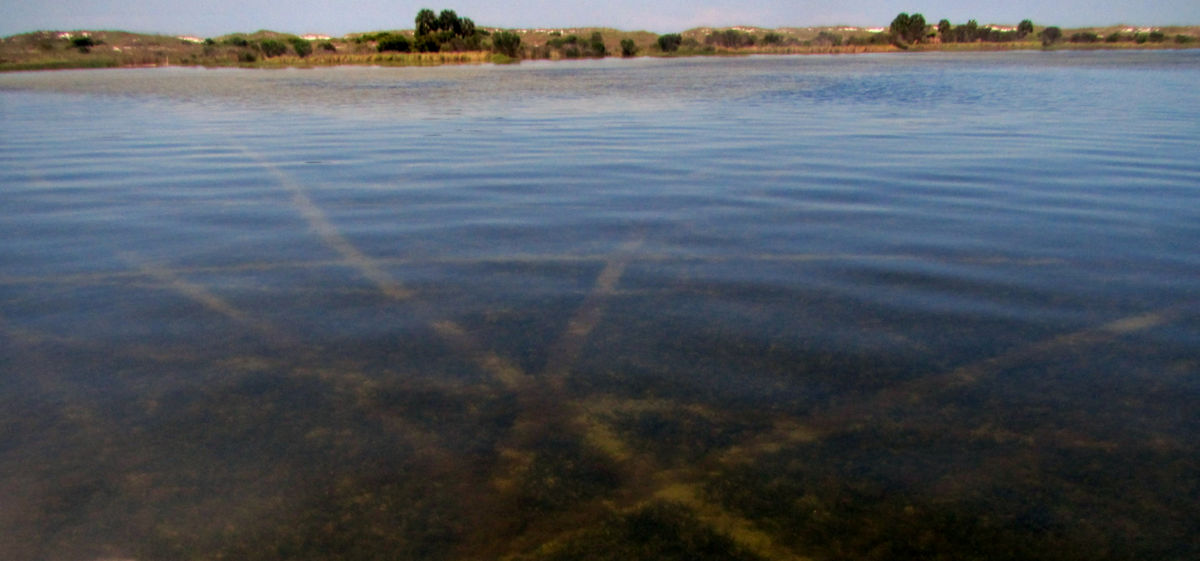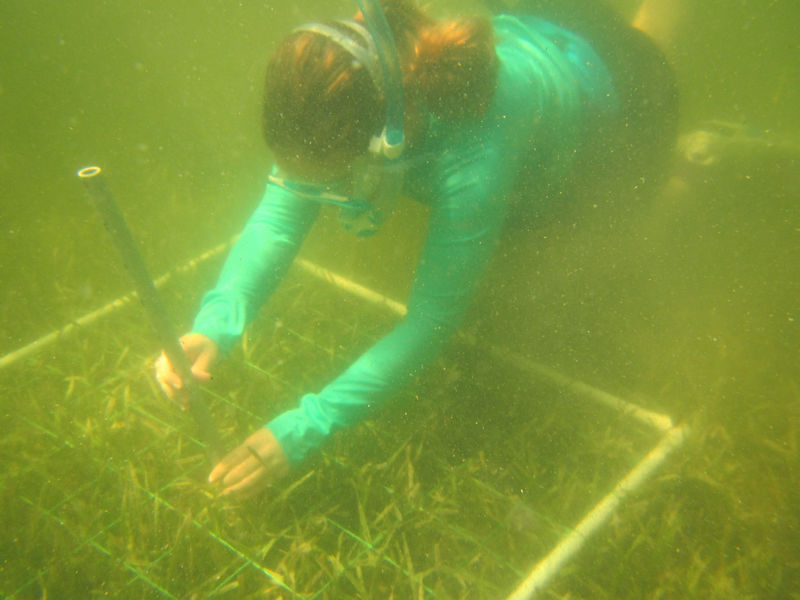

St. Andrews Aquatic Preserve - Protection of Seagrass Habitat
- Home
- Divisions
- Office of Resilience and Coastal Protection
- Aquatic Preserve Program
- St. Andrews Aquatic Preserve - Protection of Seagrass Habitat
Aquatic-Preserve Quick links
- Alligator Harbor Aquatic Preserve
- Apalachicola Bay Aquatic Preserve
- Banana River Aquatic Preserve
- Big Bend Seagrasses Aquatic Preserve
- Biscayne Bay Aquatic Preserves
- Boca Ciega Bay Aquatic Preserve
- Cape Haze Aquatic Preserve
- Cape Romano-Ten Thousand Islands Aquatic Preserve
- Cockroach Bay Aquatic Preserve
- Coupon Bight Aquatic Preserve
- Estero Bay Aquatic Preserve
- Fort Pickens Aquatic Preserve
- Gasparilla Sound-Charlotte Harbor Aquatic Preserve
- Guana River Marsh Aquatic Preserve
- Indian River-Malabar to Vero Beach Aquatic Preserve
- Indian River-Vero Beach to Fort Pierce Aquatic Preserve
- Jensen Beach to Jupiter Inlet Aquatic Preserve
- Kristin Jacobs Coral Aquatic Preserve
- Lake Jackson Aquatic Preserve
- Lemon Bay Aquatic Preserve
- Lignumvitae Key Aquatic Preserve
- Loxahatchee River-Lake Worth Creek Aquatic Preserve
- Matlacha Pass Aquatic Preserve
- Mosquito Lagoon Aquatic Preserve
- Nassau River-St. Johns River Marshes and Fort Clinch Aquatic Preserves
- Nature Coast Aquatic Preserve
- North Fork, St. Lucie Aquatic Preserve
- Oklawaha River Aquatic Preserve
- Pellicer Creek Aquatic Preserve
- Pine Island Sound Aquatic Preserve
- Pinellas County Aquatic Preserves
- Rainbow Springs Aquatic Preserve
- Rocky Bayou Aquatic Preserve
- Rookery Bay Aquatic Preserve
- St. Andrews Aquatic Preserve
- St. Joseph Bay Aquatic Preserve
- St. Martins Marsh Aquatic Preserve
- Terra Ceia Aquatic Preserve
- Tomoka Marsh Aquatic Preserve
- Wekiva River Aquatic Preserve
- Yellow River Marsh Aquatic Preserve
- All Aquatic-Preserve content
Seagrass communities are considered to be the most productive ecosystems in the world. They are a vital component of Florida’s coastal ecology and economy. Seagrass habitat is an integral part of the St. Andrews Bay system and performs several significant functions. Seagrasses provide nurseries, nutrition and shelter for a wide variety of commercial and recreational fish and invertebrate species; they provide critical habitat for animals such as wading birds, manatees and sea turtles; and their extensive root systems stabilize sediments on the bay bottom, helping to improve water quality and clarity which, in turn, keeps the bay healthy. The health and status of many commercially and recreationally important seafood species such as shrimp, crabs, scallops, redfish, trout and mullet is directly proportional to the health and acreage of seagrass habitat. For these reasons, many areas in Florida have implemented seagrass monitoring programs to determine the health and trends of local seagrass populations.
During the rapid population increase over the past 30 to 40 years, seagrass habitat has declined in inshore marine areas around Florida. As human populations continue to concentrate along the coastline, impacts to seagrass habitats increase through nutrient loading, light reduction, increased boat traffic, and more direct vessel impacts such as propeller scarring. Propeller scarring occurs in shallow water when a boat’s propeller tears and cuts up seagrass roots, stems and leaves, leaving a long, narrow furrow devoid of seagrasses. This damage can take eight to 10 years to repair, and with severe scarring these areas may never completely recover. According to a 1995 Florida Marine Research Institute Technical Report, Scarring of Florida’s Seagrasses: Assessment and Management Options, Bay County has 10,530 acres of seagrass habitat and 4,950 acres (47 percent) of that has been lightly to severely scarred by vessels .

Seagrasses that are affected by propeller scarring may never completely recover, and areas that have been damaged have the potential to expand and merge with other injuries resulting in even greater cumulative impacts. Impaired water clarity due to turbidity, algal blooms, and improper disposal of dredged material as well as excessive nutrients and disease may also degrade valuable seagrass habitat. Elevated nitrogen levels stemming from increased commercial and residential development may lead to a decline in the relative abundance of seagrasses compared to phytoplankton and macroalgae, including epiphytes. High nutrient levels may also make seagrasses more susceptible to disease. St. Andrews Bay is a unique and fragile ecosystem that is host to abundant concentrations of marine grasses. Three different species of seagrasses are known to occur within the aquatic preserve: Cuban shoal grass (Halodule wrightii), manatee grass (Syringodium filiforme), and turtle grass (Thalassia testudinum). These communities are critically important to the health and vitality of the waters of the bay; however, prominent and increasing propeller scar damage along with an increase in nutrient levels is evident and increasing in many areas. With increasing development and visitor use, these trends are expected to continue.

St. Andrews Aquatic Preserve is employing the following strategies to protect seagrass habitat.
- Develop and implement a seagrass monitoring plan for St. Andrews Aquatic Preserve that maintains a strategic, long-term seagrass monitoring project to include water quality indicators, percent coverage of seagrass and algae species, algae identification, density, epiphyte load, and sediment depths.
- Continue to collaborate with the Florida Fish and Wildlife Conservation Commission (FWC) and other state agencies on the Seagrass Integrated Mapping and Monitoring report to produce a resource for seagrass monitoring, mapping and data sharing.
- Utilize advanced GIS technology and hyperspectral imagery to quantify gains or losses to seagrass acreages, identify severely scarred areas to determine restoration needs, assess management options and develop a seagrass restoration plan for St. Andrews Aquatic Preserve.
- Partner with St. Andrews Resource Management Association, Florida Park Service, FWC and local volunteers to survey the most severely scarred areas to prioritize areas with the greatest need for restoration.
- Seek funding for future seagrass habitat restoration projects in St. Andrews Aquatic Preserve.
- Coordinate with FWC law enforcement to ensure enforcement of the seagrass law prohibiting destruction of seagrasses in St. Andrews Aquatic Preserve. Create a mechanism to estimate the cost associated with the loss and restoration of seagrass beds in the area.
- Design and distribute brochures and other outreach materials that include information on the importance of seagrass habitat, water quality, and sound user practices to prevent destruction of seagrasses.
- Repair, replace or install education signage pertaining to resource protection at public and private boat ramps and marinas throughout St. Andrews Aquatic Preserve.
- Continue to organize and participate in educational classes and outreach events throughout the Panhandle to promote the importance of seagrass and other estuarine habitats.
Interested in subscribing to DEP newsletters or receiving DEP updates through email?
Sign UpAbout DEP
The Florida Department of Environmental Protection is the state’s lead agency for environmental management and stewardship – protecting our air, water and land. The vision of the Florida Department of Environmental Protection is to create strong community partnerships, safeguard Florida’s natural resources and enhance its ecosystems.
Learn MoreContact
3900 Commonwealth BoulevardTallahassee, Florida 32399-3000 Public.Services@FloridaDEP.gov 850-245-2118
